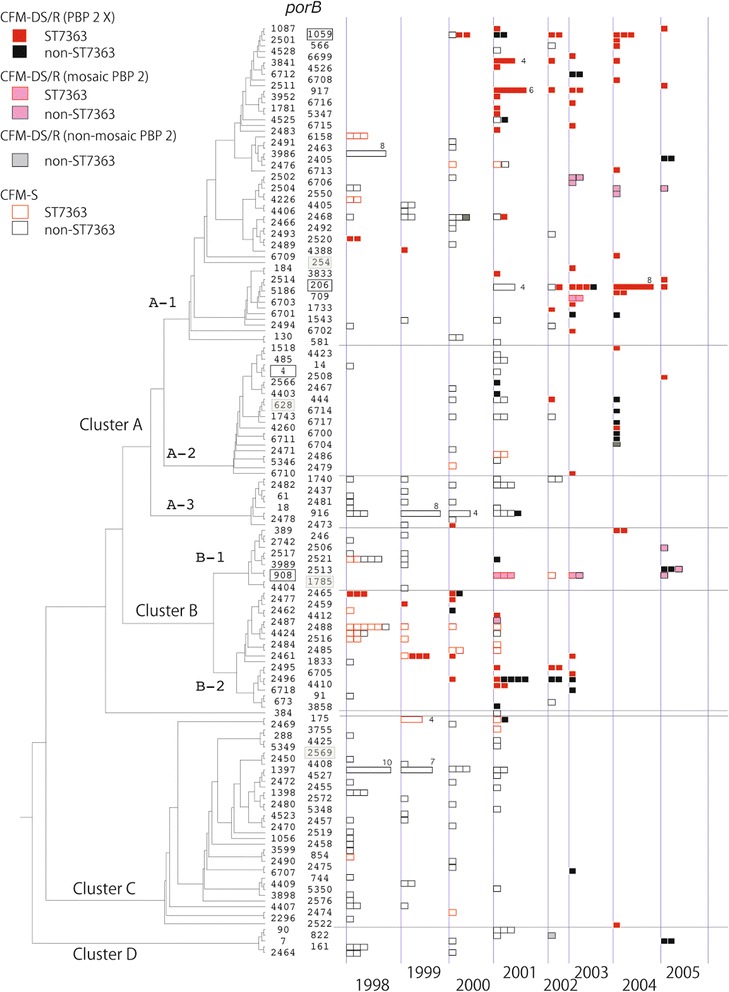Fig. 3.

Comparison of the porB gene sequences in Neisseria gonorrhoeae isolates obtained from 1998 to 2005 in the Kanagawa area, Japan. Dendrogram was constructed using 163 partial porB sequences (490 bp) by UPGMA. One -hundred -fifty-nine porB sequences were from N. gonorrhoeae isolates examined in this study, including four of the major porB alleles in the Kyoto/Osaka strains isolated during 2010–2012 [24], (depicted in the shaded frame). The two remaining of the major porB alleles in the Kyoto/Osaka strains (porB1785 and porB2569) [24] and porB254 and porB628, from strains with cefixime resistance in Sweden (2002) and the USA (2003) [27], were also included with the porB type framed. Each box illustrates an individual strain. When more than four isolates with the identical porB type were cultured in the same year, the number of isolates is shown. Red and black boxes indicate MLST ST7363 strains and non-ST7363, respectively. Filled boxes indicate CFM-R/DS strains. Red and black filled rectangles, ST7363 and non-ST7363 strains with PBP 2 X, pink and gray are mosaic PBP 2 other than PBP 2 X and non-mosaic PBP 2
